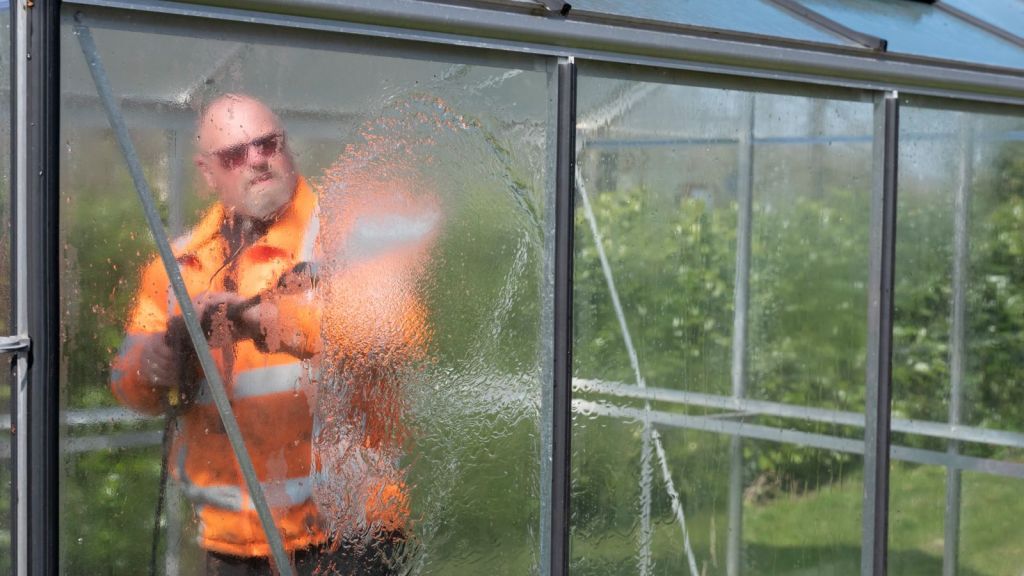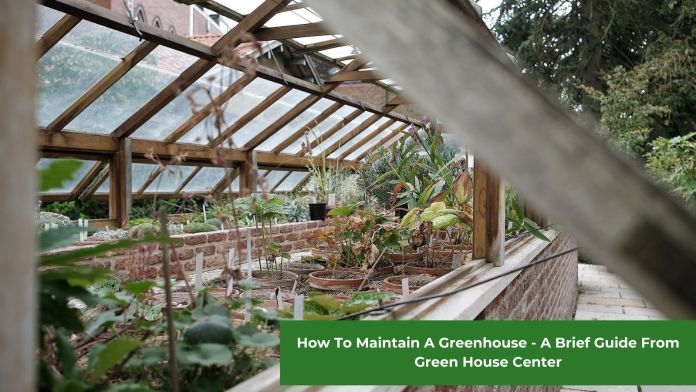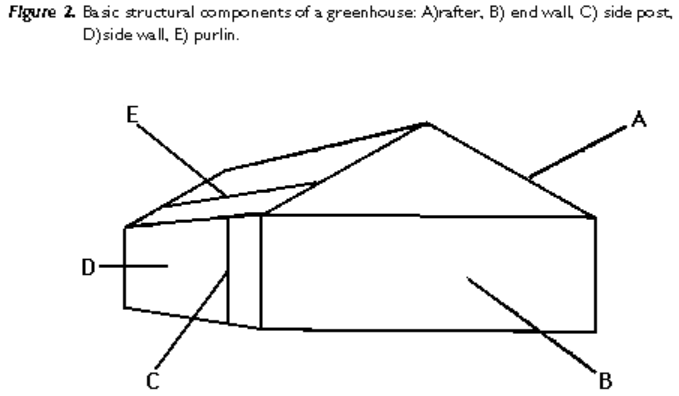A greenhouse is a climate-controlled structure. It is either made of glass or has multiple layers of plastic to maintain the required temperature. A greenhouse aims to protect and grow tender plants in a suitable environment. It is also great to cultivate seasonal plants during the off-season time. Growing and caring for the plants in a greenhouse can be tedious, as is maintaining it properly.
The maintenance includes looking after the plants meticulously. And to do so, you must ensure to have efficient equipment. Cleanflow offers a wide range of Greenhouse maintenance products, as seen here. You can get them and prevent the plants from rotting while helping them to grow to their full potential.
So, in this article, we’ll discuss essential steps to maintain the plants and have a well-functioning greenhouse.
Maintaining The Greenhouse Itself
Maintaining a greenhouse is not a task to be done once a month; it is a continuous process that never stops.
1. The Greenhouse Structure
Maintaining the structure of your greenhouse begins with regular checks for rust, wear, and tear on the frame, promptly treating any identified issues to prevent further deterioration. The glazing material (glass or plastic) should be closely monitored for cracks or breaks. They can lead to unwanted exposure to cold air, pests, or disease without a thorough check. Keeping the glazing clean is equally important as it ensures maximum light penetration, which is critical for the growth of your plants.
2. Important Systems
The other critical components to pay attention to are the ventilation, irrigation, and heating systems. Regular cleaning and maintenance of fans, vents, and automated systems are crucial to controlling the internal climate of the greenhouse, ensuring an optimal balance of temperature and humidity. Similarly, checking hoses, sprinklers, and other watering apparatus for leaks or blockages will ensure a healthy and steady water supply. For those in colder climates, properly servicing heating equipment and ensuring efficient functioning are necessary for the colder months.
Read more: How To Heat A Greenhouse With Solar Panels.
3. Cleaning schedules
Greenhouse cleaning should be a regular and structured task to ensure optimal conditions for plant growth. Daily, you should remove any fallen leaves or plant debris in order to prevent the spread of diseases. Weekly tasks include:
- Cleaning tools used in the greenhouse.
- Disinfecting work surfaces like potting benches.
- Sweeping floors.

The irrigation and ventilation systems should be checked and cleaned monthly to ensure they function well and do not foster disease. A thorough deep clean should be conducted at the end of each growing season, including removing all plant matter, thoroughly cleaning floors and disinfecting surfaces. The structural integrity of the greenhouse, especially the glazing material, and frame, should also be checked, and the glazing cleaned to maximize light for the upcoming growing season.
Annually, heating and cooling systems should undergo maintenance, including servicing the heater or cleaning the fans and vents. While these guidelines provide a baseline, monitoring your greenhouse regularly and adapting the cleaning schedule based on specific needs is crucial.
Read more: How To Heat A Greenhouse In Winter? – A Few Good Ways To Do It.
Taking Care Of What Is Inside
A greenhouse is mainly used for growing plants in a controlled environment. The primary purposes include year-round cultivation, plant propagation, exotic or out-of-season crops, and conducting plant research. This structure protects from adverse weather, pests, and diseases. Here are the things you should look after when maintaining what is inside your greenhouse:
#1. Sufficient Sunlight
Sunlight is essential in natural photosynthesis, the core factor in plants’ growth. Hence it is essential to maintain and keep the greenhouse glass clean so that proper sunlight can pass through it and reach the plants.
The tricky part here is that only some of the plants, like Radicchio, Cress, or Cilantro/coriander need less sunlight. For these plants, you must provide enough shade to avoid excessive sunlight.
#2. Humidity Control
To maintain the humidity control system in a greenhouse:
- Inspect and clean all components, such as vents, fans, heating or cooling systems, and dehumidifiers.
- Promptly repair or replace any damaged parts.
- A hygrometer helps monitor humidity levels and adjust the settings of your automated system as necessary.
- Be mindful of your watering practices and plant spacing, as these can also impact humidity levels.
Regular maintenance and vigilance help ensure your system effectively controls humidity, promoting optimal plant growth conditions.
#3. Watering
Maintenance of the watering system in a greenhouse is crucial for the well-being of your plants. If you’re using an automatic watering system, regularly check for leaks or malfunctions and verify that the correct amount of water is delivered. The filters and emitters in the system should be cleaned routinely to prevent blockages, and any detected leaks or broken parts should be repaired promptly to avoid waste and potential water damage.

Water quality is also essential, and you should periodically test your water source for contaminants that could harm the plants. Regarding humidity control, ensure the ventilation and dehumidifying systems work effectively to maintain the proper humidity levels in the greenhouse. These systems also need regular maintenance to stay efficient. With regular and attentive maintenance, your watering system will function effectively, contributing to your greenhouse’s overall health and productivity.
Read more: The Benefits of Greenhouse Gardening.
#4. Soil & Fertilizer Check
Maintaining soil health and managing fertilizers in a greenhouse involves a series of essential steps. Regular soil testing is crucial to understanding the soil’s nutrient content and pH level, which informs the appropriate choice and application of fertilizers. Over-fertilization should be avoided as it can harm plants and potentially leach into groundwater.
Regularly incorporating organic matter, such as compost or manure, into the soil can enhance soil fertility and structure. If feasible, crop rotation helps prevent nutrient depletion in the soil and disrupts pest and disease cycles. Observing your plants for signs of discoloration, stunted growth, or distress can provide early indications of nutrient deficiencies or other soil-related issues. Watering practices should be optimized as overwatering can wash away nutrients while underwatering can hinder plant nutrient uptake.
Finally, safe and secure storage of fertilizers is imperative to prevent spills, and all instructions on the label for usage and disposal should be followed. A productive and healthy greenhouse environment can be maintained by regularly monitoring soil health and managing fertilizer usage conscientiously.
#5. Pests & Disease Control
To control pests and diseases in a greenhouse, regular monitoring is essential to detect any signs early on. Integrated Pest Management (IPM) techniques should be employed, which include strategies like biological control using beneficial insects, cultural practices, physical barriers, and targeted pesticide applications as a last resort. Maintaining cleanliness and sanitation in the greenhouse, including proper disposal of plant residues and disinfection of tools, helps prevent the spread of pests and diseases.
Isolating new plants or cuttings for a quarantine period can ensure they are free from infestations before introducing them to the main greenhouse. Good ventilation and air circulation help reduce humidity and minimize fungal diseases. Opting for disease-resistant plant varieties, introducing beneficial insects, and using pesticides sparingly and responsibly when necessary contribute to a balanced and practical approach to pest and disease control in the greenhouse.
Read more: Custom Insect Screens Installation And Maintenance Tips.
Summing Up Before You Leave …
A greenhouse is becoming essential for cultivating and growing plants even when the climate and conditions outside are unfavorable. The greenhouse works by trapping the heat and converting it to humid conditions to nourish the plants. Whether you maintain a small greenhouse or a large one, you must follow all the above steps to grow healthy plants free from pest attacks and diseases. You can also be creative and arrange the plants in a way that is pleasing to look at.
Is this article helpful to you? See a few related posts below:





















